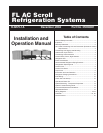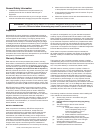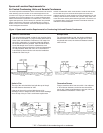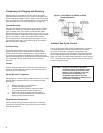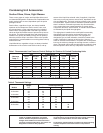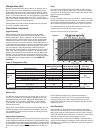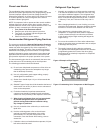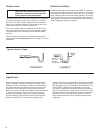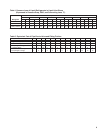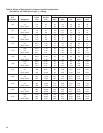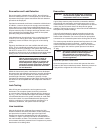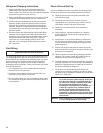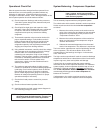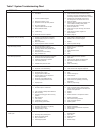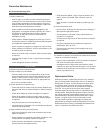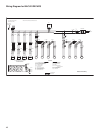
8
Liquid Lines
Liquid lines should be sized for a minimum pressure drop to
prevent “flashing”. Flashing in the liquid lines would create
additional pressure drop and poor expansion valve operation.
If a system requires long liquid lines from the receiver to the
evaporator or if the liquid has to rise vertically upward any
distance, the losses should be calculated to determine whether
or not a heat exchanger is required. The use of a suction
to liquid heat exchanger may be used to subcool the liquid
to prevent flashing. This method of subcooling will normally
provide no more than 20
˚
F subcooling on high pressure
systems. The amount of subcooling will depend on the design
and size of the heat exchanger and on the operating suction
and discharge pressures. An additional benefit from the use
of the suction to liquid type heat exchanger is that it can
help raise the superheat in the suction line to prevent liquid
return to the compressor via the suction line. Generally, heat
exchangers are not recommended on R-22 low temperature
systems. However, they have proved necessary on short,
well insulated suction line runs to provide superheat at the
compressor.
Figure 6. Suction P-Traps.
Slope 1/4"
per 10 ft.
toward
compressor
Suction Lines
NOTE: If the suction line must rise to a point
higher than the suction connection on the
evaporator, a suction line trap at the outlet
of the evaporator must be provided.
Horizontal suction lines should slope away from the evaporator
toward the compressor at the rate of 1/4 inch per 10 feet for
good oil return. When multiple evaporators are connected in
series using a common suction line, the branch suction lines
must enter the top of the common suction line.
For dual or multiple evaporator systems, the branch lines to
each evaporator should be sized for the evaporator capacity.
The main common line should be sized for the total system
capacity.
Suction lines that are outside of refrigerated space must be
insulated. See the Line Insulation section on page 11 for more
information.
Suction Line Risers
Prefabricated wrought copper traps are available, or a trap can
be made by using two street ells and one regular ell. The suction
trap must be the same size as the suction line. For long vertical
risers, additional traps may be necessary. Generally, one trap is
recommended for each length of pipe (approximately 20 feet) to
insure proper oil movement. See Figure 6 below for methods of
constructing proper suction line P-traps.



